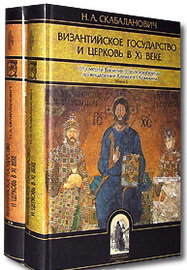
Staples - Paul and the Resurrection of Israel

A little over a century ago, Albert Schweitzer suggested that providing an explanation for how a small Jewish sect proclaiming a rabbi from the backwater town of Nazareth to be the messiah of Israel so quickly transitioned to a movement primarily involving non-Jews was “the great and still undischarged task which confronts those engaged in the historical study of primitive Christianity.” “The primary task,” Schweitzer says, “is to define the position of Paul,” the Jewish teacher who declared himself “apostle of nations/gentiles” and insisted on the inclusion of non-Jews as equal members in the communities of Jesus-followers. Despite significant advances over the past century, the position of Paul has remained difficult to define and has been the subject of significant scholarly reappraisal in recent decades. Paul’s distinctive insistence on the inclusion of uncircumcised “gentiles” (that is, non-Jews) as full members of communities devoted to following Jesus as the messiah of Israel served as a key pivot point in the transition from a small Jewish sect to the primarily gentile movement a generation later. But the rationale for that inclusion – and how it fits with God’s plan for Israel as Paul understands it – has continued to engender considerable inquiry and debate.
That is not to say that no progress has been made, as much that could be taken for granted in Schweitzer’s day has been weighed and found wanting. For example, even a generation ago, most scholarly work could presume a traditional (mostly Protestant) view in which Paul understood Jesus to have abolished the Torah, resulting in the universal “law-free” message of “justification by faith” as opposed to Jewish “legalism” or “works-righteousness” – that is, the idea that one must observe the Torah to achieve God’s favor through one’s righteous works, a task Paul allegedly found onerous and impossible before his “conversion” to “Christianity.” In this model, the inclusion of gentiles in the new Christian community is therefore a natural outgrowth of Paul’s realization that salvation could not be achieved through obedience to the Torah – which Christ abolished – but is instead freely available to anyone who believes in Christ without regard for works. Consequently, non-Jews now have the same access to salvation as Jews, whose “legalism” or “works-righteousness” provides the foil for Paul’s universal message. In this model, Paul’s new “Christian religion” has superseded “Judaism,” and the church has become the “true Israel,” effectively replacing the disobedient Jews who have refused the gospel.
Though this reading has by no means disappeared, it can no longer be taken for granted because of many faults found in its foundation – most notably in the alleged opposition between ”Jewish legalism” and Paul’s message of “grace” and “justification by faith.” First, as Krister Stendahl famously pointed out in “Paul and the Introspective Conscience of the West,” the apostle gives no indication of having had a guilty conscience or of having had any difficulty keeping the Torah – a view Stendahl identifies as having derived from Augustine rather than Paul. Instead, Paul had a “rather ‘robust’ conscience,” declaring that he had been “blameless with respect to righteousness which is in the Torah” (Phil 3:6) and continuing to emphasize the importance of obedience throughout his letters, warning his hearers that all will reap what they have sown (Gal 6:7–8) and will be judged based on works (2:6–11). It is therefore unlikely that Paul arrived at the doctrine of justification by faith in opposition to obedience to Torah and then concluded that gentiles could be included on that basis.
Jason A. Staples - Paul and the Resurrection of Israel - Jews, Former Gentiles, Israelites
Cambridge: Cambridge University Press, 2024. – 457 p.
ISBN 978-1-009-37676-1
Jason A. Staples - Paul and the Resurrection of Israel – Contents
List of Figures
List of Tables
Preface
Acknowledgments
Introduction: Jews, Former Gentiles, Israelites
- Who Are Paul’s (Former) Gentiles?
- “All Israel Will Be Saved”
- Empirical Ethnicity?
- The Agenda of This Work
- Excursus: The Audience of Paul’s Letters
- Excursus: Translating Key Terminology
- Jews or Judaeans?
1 The God of Jews Only?
- An Experiment in Criticism: Beyond the Insider/
- Outsider Paradigm
- Two Nations under God: The Other Israelites
- The Great Divorce: Israel and Judah
- Great Expectations: The Restoration of Israel and Judah
- Will the Real Israelites Please Come Back?
- Revival in the Land and Israel’s Ongoing Exile
- There and Back Again: Israel and Restoration Eschatology
- Return of the King: Jesus and the Gospel
2 Paul and the Israel Problem
- Minister of a New Covenant
- The New Covenant and Israel’s Justification
- The Spirit and the New Covenant
- Spirits in Bondage: The Curse of the Torah and Israel’s Infidelity
- Smoke on the Mountain: The Letter and the Veil
- The Curse of the Torah: Death (By Exile)
- Deliverance from the Age of Wrath
3 The Israel Problem and the Gentiles
- The Stumbling Block of Romans –
- Paradise Lost: Judgment against Impiety and Immorality
- The Discarded Image: Idolatry, Immorality, and the
- Knowledge of God
- Pride and Prejudice: Israel and the Nations under Sin
- The Abolition of Man: God’s Impartial Justice
- Justice and Mercy Have Kissed
- Crime and Punishment: Impartial Judgment for Jews and Greeks Alike
4 Salvation through Justification: Jews and Gentiles Alike
- Jewish Identity and God’s Impartiality
- That Hideous Strength: The Three Traps of Belial
- The Value of Circumcision
- The Hidden Jew Belongs to God
- Circumcised Jews, Uncircumcised Israelites
- Doing Torah by the Spirit: Grace and Works
- Restoration via the Spirit in Romans
5 “Not My People”: Israel’s Infidelity and God’s Fidelity
- “Not All from Israel Are Israel”
- God in the Dock: Potter, Clay, and Divine Pathos
- God’s Patience and Divine Pathos
- Vessels of Wrath
- “Not My People,” Ethnic Mixture, and Vessels among the Nations
- Notes from the Underground: Dishonored
- Vessels Redeemed
- Have Gentiles Attained Righteousness?
- The Business of Heaven: Redemptive Reversal
6 God’s Justice and the End of the Torah
- Bringing the Messiah: Righteousness and Redemption
- Righteousness and Restoration in the Torah and Prophets
- The Yahad as Righteous Vanguard of Israel
- The Contingency of Israel’s Restoration
- Repentance and Restoration in Rabbinic Traditions
- The Grand Miracle: Divinely Initiated Justness
- The One Who Lives: Messiah and the Justness of God
- Divine Deadlifting: The Resurrection of the Just One
- The Just One and Redemption from the Curse of the Torah
- The Logic of Galatians
- Reconsidering a So-called Antithesis
- He’s the Messiah! Pledging Fealty to the Living Lord
7 The Mystery of Israel’s Salvation
- Disobedience, Mercy, and Jealousy
- Jealous God, Jealous People
- Impartial Justice, Mercy to All
- Jealousy, Not-My-People, and a Non-Nation
- Consecrated by Incorporation
- The Olive Tree
- Broken Off and Grafted In
- Judgment and the Remnant
- Paul’s Mystery Revealed
- A Mysterious Sequence?
- Paul’s Mystery: The Fullness of the Nations
- “All Israel”: Israel and Judah
- Surprised by Joy: Mercy to Israel, Mercy to All
8 The End of the Matter
The Last Battle: Death, Resurrection, and the Vindication of YHWH
- Paul’s Coherent Core: Israel’s Resurrection
- Incorporation, Not Supersession
- Why Not Circumcision?
- Strengths of This Reading
- The Payoff: The Task Discharged
Bibliography
Primary Sources Index
Author Index
Subject Index




Комментарии (1 комментарий)
Большое спасибо!